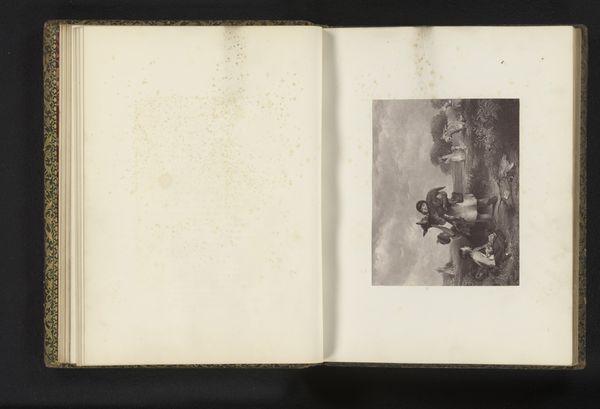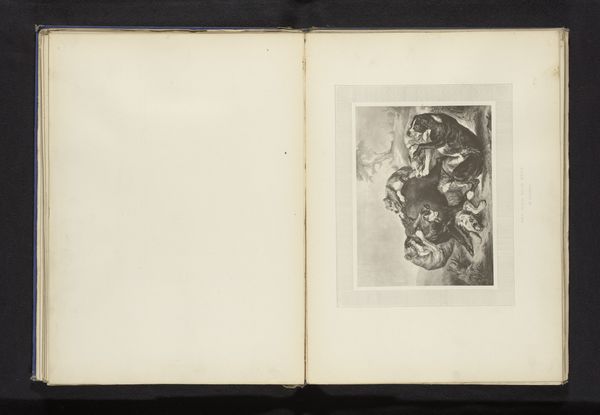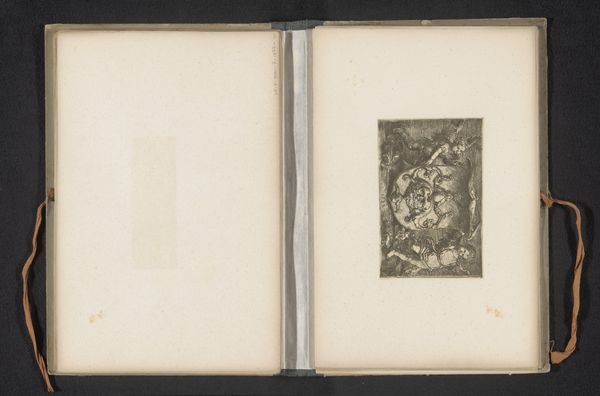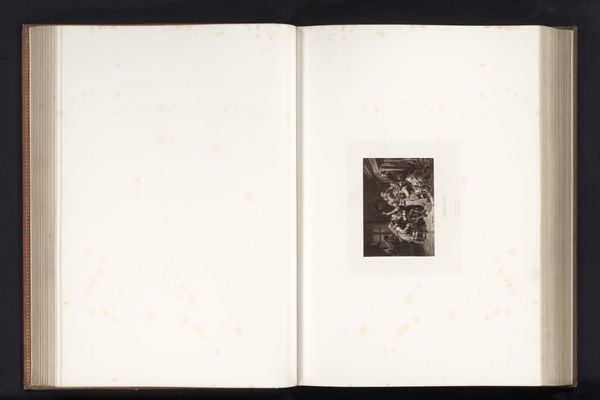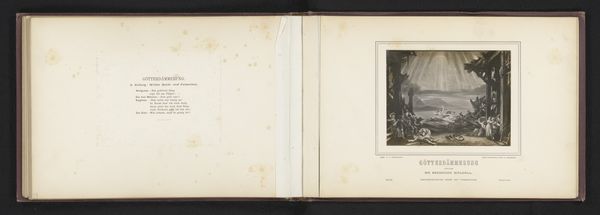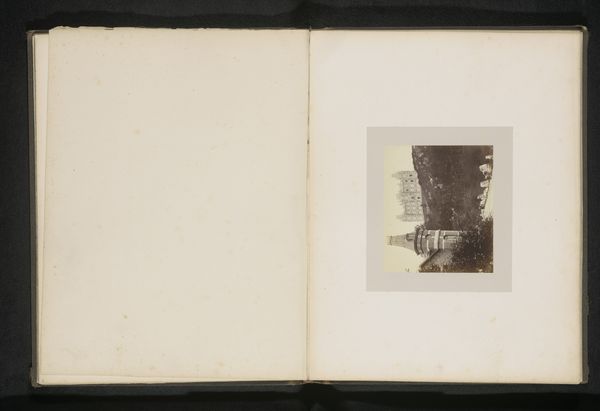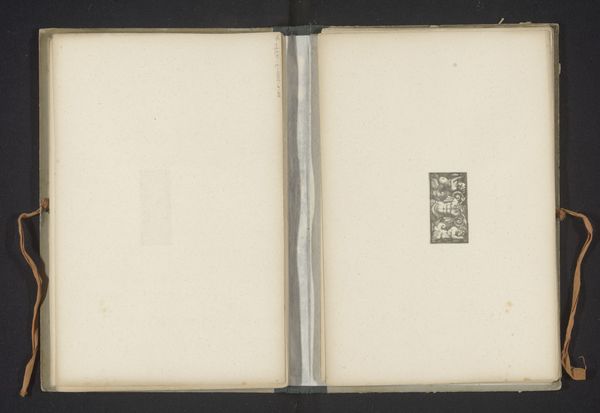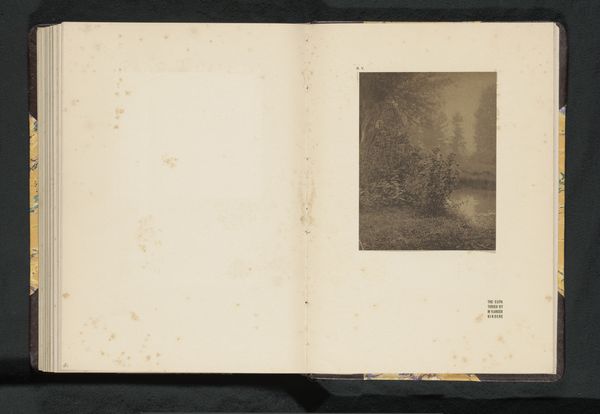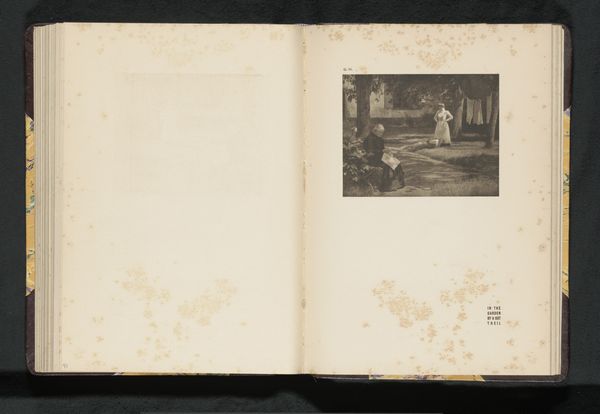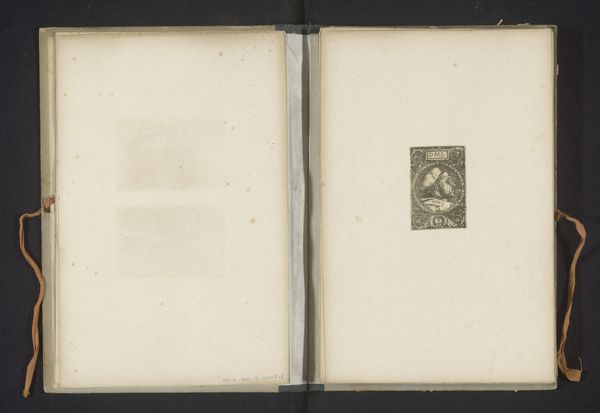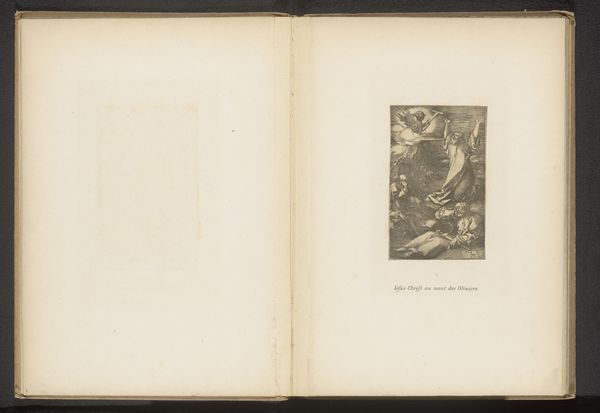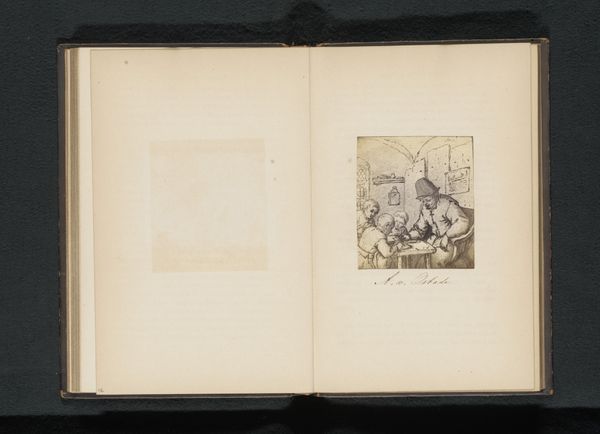
Reproductie van een prent van twee jongens met een helm en een vaandel door Lucas van Leyden before 1871
0:00
0:00
simonautoovey
Rijksmuseum
drawing, print, paper, engraving
#
portrait
#
drawing
# print
#
figuration
#
paper
#
11_renaissance
#
coloured pencil
#
northern-renaissance
#
engraving
Dimensions: height 118 mm, width 77 mm
Copyright: Rijks Museum: Open Domain
Editor: So, here we have a reproduction of a print by Lucas van Leyden, created before 1871. It’s an engraving depicting two boys with a helmet and a banner, currently housed at the Rijksmuseum. It has this intriguing faded quality, almost like a ghost from the Renaissance. How do we unpack this from a Materialist viewpoint? Curator: Well, let's start with the process itself. Engraving in the Northern Renaissance was a labor-intensive practice. Think about the tools Van Leyden would have used: burins, metal plates, and the skilled labor necessary to create the matrix. The very act of reproduction speaks to its social context. Why reproduce this image? Editor: Perhaps to make it more accessible, since this is just a reproduction and not the original... It also is in a bound volume, seemingly alongside an empty leaf on the facing page. Was this blank space by design? Curator: Precisely! The shift from unique artworks to reproducible images has enormous implications for access, value, and distribution. The material transformation, that process of copying, allowed it to be accessible beyond elite circles, thus shaping its consumption and therefore, the original's perceived value.. Now, consider the materials themselves: the paper, the ink. The aging of the print becomes a part of its story. What can the wear and tear tell us? Editor: Right. The staining and spotting on the paper hints at a life lived, handling and storage over time, becoming artifacts of history, in a way. And I see that the Simonau & Toovey studio gets the credit for reproducing it. They turned art production into industry. Curator: Exactly! How does the reproducibility affect the way we interpret the image? Does knowing that this is a copy, not an original print, change our understanding of it? Editor: Definitely. It’s not just about the boys anymore, it’s also about the machinery of art production and consumption in later eras! So the social impact, how many copies are printed and where those copies end up. All the stages of life cycle that go way beyond the artist’s intention. Thank you for enlightening me. Curator: My pleasure. Seeing art through a material lens always offers new layers of meaning.
Comments
No comments
Be the first to comment and join the conversation on the ultimate creative platform.
